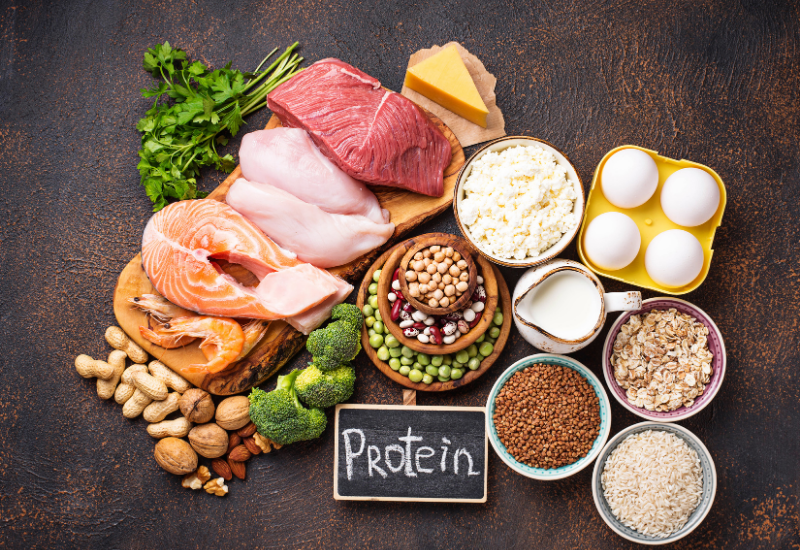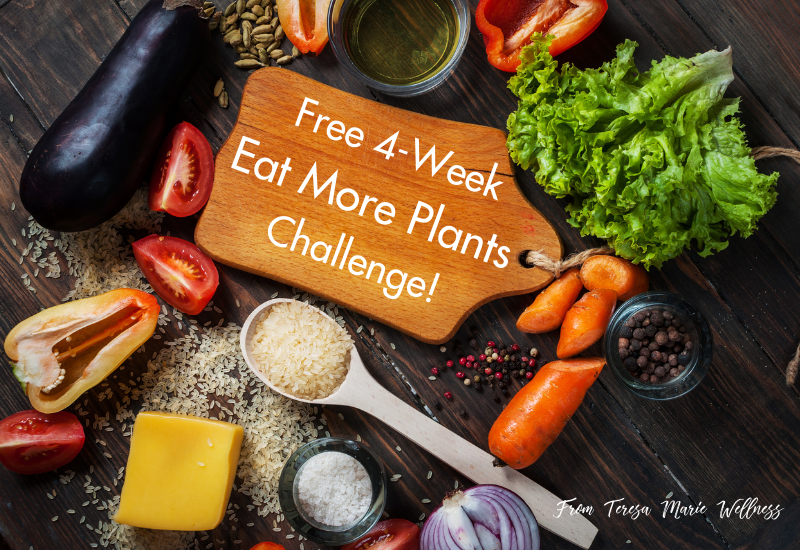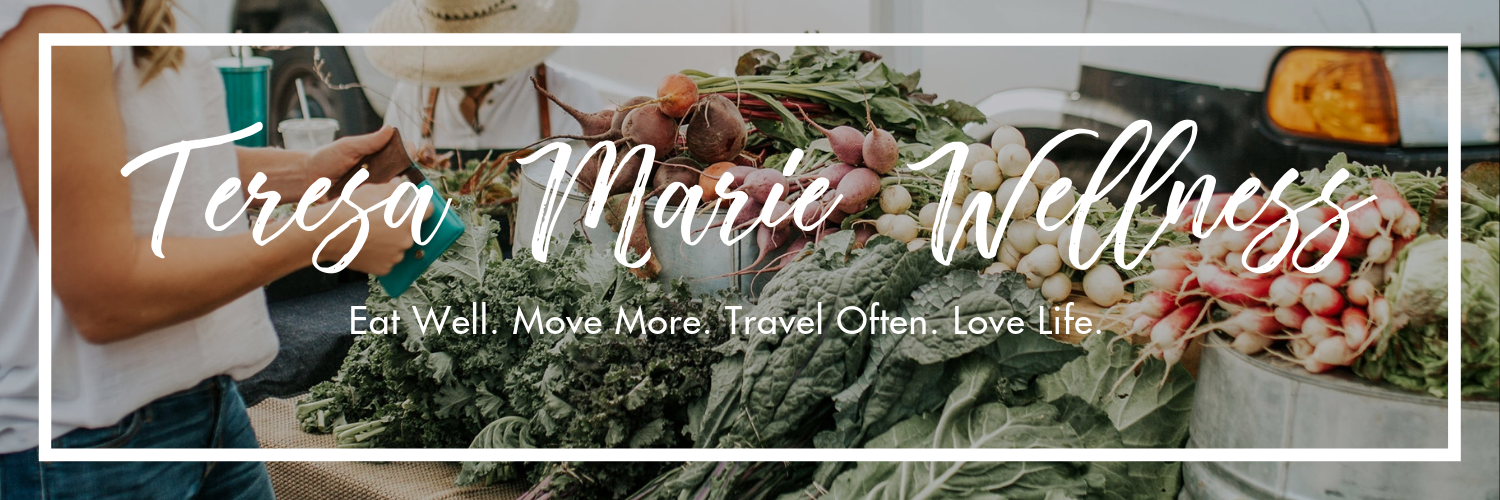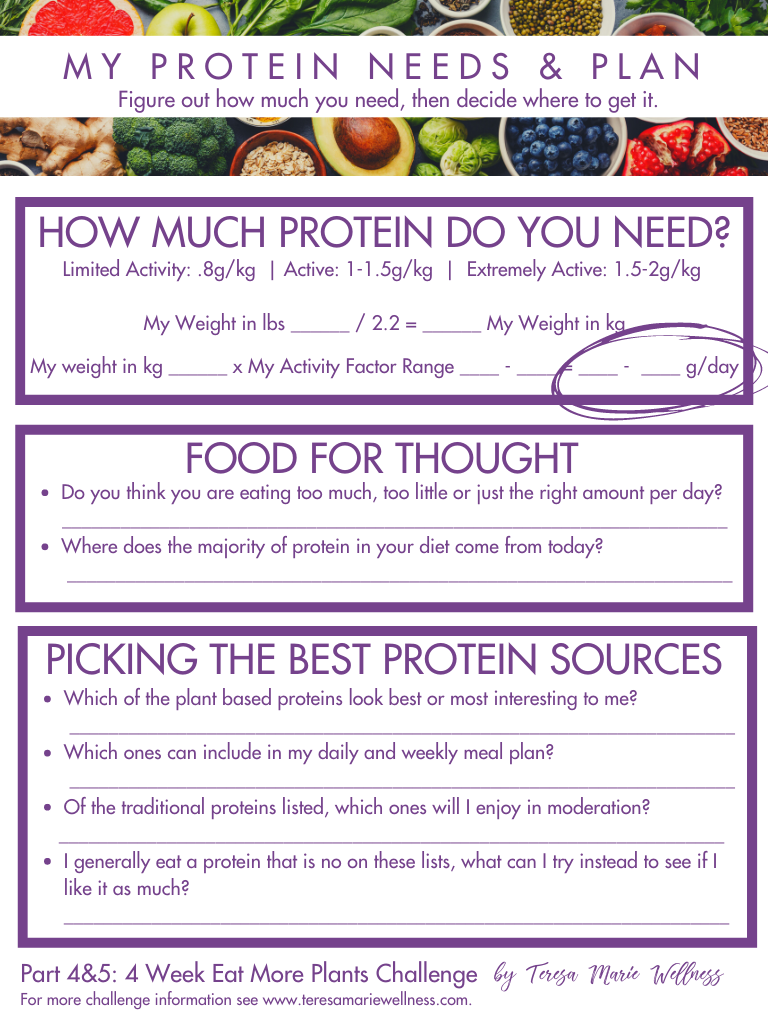Part 4: How much protein do you need?

One question I get all the time (and you will too as you embark on a plant forward journey) is “What about protein?” It’s a wild misconception that your body needs tons of protein to survive and a general misunderstanding, that yes, plants have protein too!
We’ll break this into two sections to address both areas and right now we’ll talk about common protein myths. Then we’ll look at your body and your life so you know exactly what your protein goals are. In the next session, we can figure out the best sources for your body.
Welcome to Part 4 of the 4-Week Eat More Plants challenge! As a reminder, here is what you’re in for:
- Welcome: What is a Plant Forward Diet
- Setting up Your Plant Forward Pantry
- When Organic Food is Worth the Cost
- Calculate How Much Protein YOUR Body Needs <== You are Here
- The Best Sources of Traditional & Plant Based Proteins
- Preventing Food Waste with Proper Food Storage
- Which Plants Can Cause Bloating and Inflammation
- Cultivating Sustainable Healthy Habits
First off, do you already know how much protein do you need to function your best? High five and kudos to you if you do, as most people vastly overestimate their protein needs. And unlike vitamins and minerals, the answer isn’t as simple as a standard DRI or flat recommendation for all people. It does in fact involve a little savvy knowledge and some basic math.
Too much or too little protein can be a problem, so it is important to know how much your body needs, regardless of which diet you follow. Let’s dig in…
Nutrition Myth: If I eat more protein, I’ll gain muscle, right?
What’s True: Protein is made of different amino acids, which are the building blocks of the body. In addition to growing your hair and fingernails, producing hormones, boosting your immune system and replacing red blood cells, these amino acids also, of course, build and repair muscle tissue.
What’s False: Eating more protein alone will not grow muscle. Building muscle is hard work and requires physical effort in addition to proper nutrition. Your body can’t store our use excess protein. If you consume more than your body needs, it will break excess amounts into its respective amine groups and glycogen. The glycogen is used for energy or stored as fat and the amine groups passed onto the urine.
Take Away: Simply eating more protein can’t help you build more muscle. Because your body can’t store protein, you need to consume enough each day to meet your body’s needs. And eating too much is not only wasteful, it will make you fat. Just like too much of anything can.
How much protein can a body use each day?
The recommended daily requirement for protein is set at .8 gram per kilogram of body weight. If you are a recreational athlete, it’s safe to bump that up to 1-1.5 grams. If you’re really out there burning the oil as an endurance athlete, you’ll be good in the 1.5-2 gram range. Much more than that won’t be utilized for muscle repair or other growth requirements.
Examples:
- Jenny is a 115 lb marathon runner. She weighs 52kg x 1.5-2g = 78-104g per day
- Lucy is a 165 lb inactive office worker. She weighs 75kg x .8g = 60g per day
- Bob is a 198 lb slightly active doctor. He weighs 90kg x 1-1.5g = 90-135g per day
- Nancy is 145 lb fairly active teacher. She weighs 66kg x 1-1.5g = 66-99g per day
Now that you how to calculate protein needs for Jenny, Lucy, Bob and Nancy, let’s figure out whats best for you.

How to calculate your daily protein needs:
- Your weight in pounds __ divided by 2.2 =__ Your weight in KG
- __ your weight in KG x__ your protein need =__ Your daily protein goal in grams.
Why is there a range? Because your activity probably varies day to day. On days you are really pushing it, be sure to aim for the high range. On lighter days, shoot for the lower end of the range.
Print your worksheet and plan now to really dig into the Food For Thought Questions. How have you approached protein in the past? Is that something you want to continue or do you think there is room for improvement? In the next lesson, we’ll discuss the best sources of plant and traditional protein. Then you’ll be able to complete the bottom portion of this worksheet.
In Summary & Next Steps
Remember, you can’t use more than your body needs each day, so you need to have a plan to make sure you get the right amount each day. Once you know your number, do the math and come with simple recipes and snacks to make sure you’re meeting your body’s needs.
I hope this information will be helpful as you adopt the Plant Forward style and really start to dig into meal planning.
- Print your Protein Worksheet and Plan. If you are signed up for the 4 week challenge, add it to your small binder or folder with your other challenge printable action sheets.
- Think about the questions. Do you think you are eating too much, too little or just the right amount? Where does the majority of protein in your diet come from today? Can you use more plant based proteins instead?
- If you want more support building a full meal plan that has enough plant based meal plan, definitely take a look at my Plant Forward Meal plans. They include full, well balanced days and give you the option to add traditional sources as you prefer.
Up next in the 4-Week Eat More Plants Challenge: The best sources of Plant Based and Traditional Protein. If you’re not signed up for the free challenge yet, you can do that right here!

There you have it! You’re well on your way to adopting a Plant Forward diet and feeling the amazing benefits!
*This post was originally published on Eat. Drink & be Skinny*
About The Author
Teresa Howes
I’m a board certified holistic nutritionist, certified personal trainer, plant forward & flexatarian lifestyle enthusiast and self proclaimed Veggie Ninja. I’m here to inspire and illustrate how delicious, simple and fun healthy living can be!
Related Posts
A Healthy Gut Party (a.k.a How to Restore Gut Health After Antibiotics)
I am an advocate of a healthy diet and how the right food is at…
November 28, 2024The Perfect Plant Forward Thanksgiving
The word “healthy” is generally not the first thing to jump in your…
November 18, 2024


